How To Load-Unload The Microbrewery Equipment And The Attentions
1. Why should the microbrewery equipment be packed, loaded, unloaded in the right way
With the development with the craft beer, more and more people are looking for the microbrewery equipment and build their own brewery. Most of them are brewers or beer lovers, and have enough knowledge on how to use their brewery equipment to brew the craft beers, but maybe they don’t know well on how to load, unload their microbrewery equipment in the right way, especially for the situation that they purchase their brewing tanks from the abroad. So some damages or scratches may happen in the loading or unloading process. Following we will talk about on how to load the brewery equipment in the containers and unload from them for the different situations, as well as some important attentions.
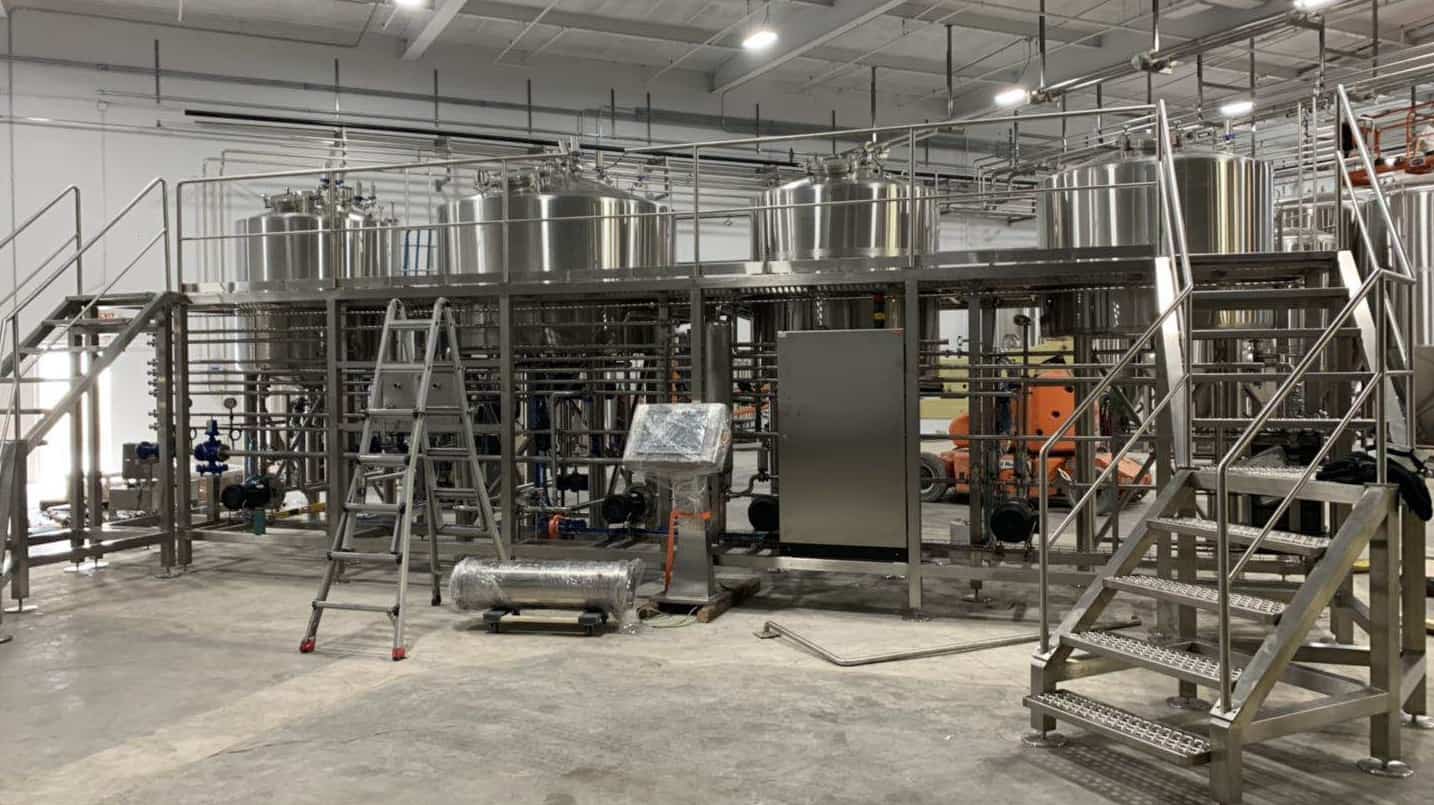
2. How to load the brewing equipment in the different shipping containers
(1) LCL ( Less Container Load )
What is LCL
It refers to brewing equipment packed with small amount less than a full container. This kind of goods is usually taken by the carrier separately and centralized at the container freight station or inland station. Two or more tickets of goods are assembled into one container, and then the same goods are delivered separately at the container freight station or inland station at the destination.
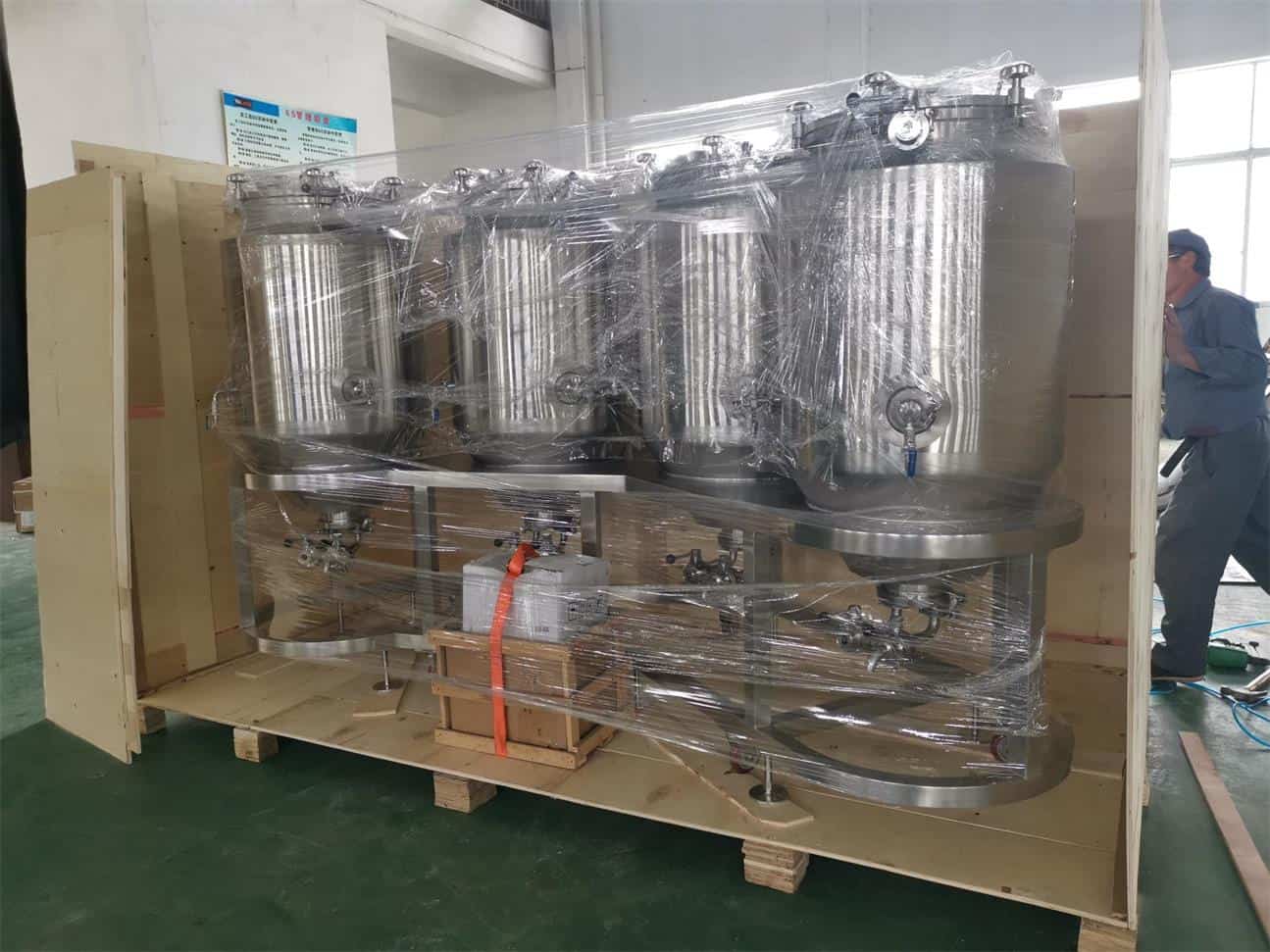
Advantage and Disadvantage
The advantage is that we could save much shipping fee in this way. The disadvantage is that the shipping time is unstable. If the shipping company does not receive enough cargo for one container or any package, the shipping time will be delayed. In addition, in order to avoid the damages or scratches of the tanks in the long shipping, the tanks need to be packed by the plywood, which will lead to the increase in costs.
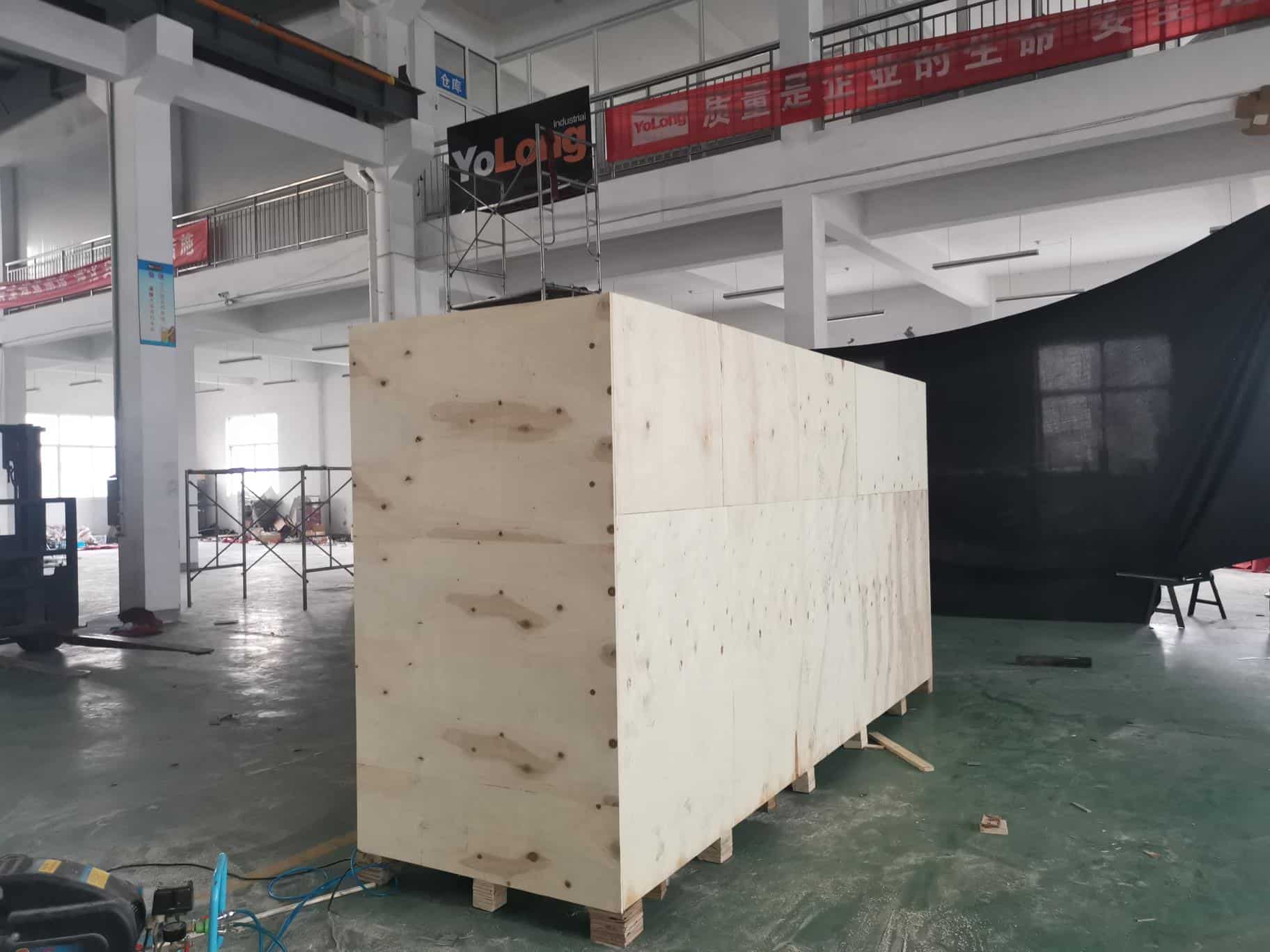
How to pack the brewing tanks
A thin film will be covered in the tank surface, the tanks could be supported by the U-steels with wheels at the bottom for moving conveniently, and then it will be loaded in the plywood case for the protection.
(2) 20GP ( 20 Feet General Purpose )
It is the general container for the shipping, internal dimensions is 5950 x 2340 x 2370 mm. The inner space is very small compared with the general 40 feet containers, so it is often used for the microbrewery upgrading or expanding.
For the small fermenter tanks or bright beer tanks, such as 500L or smaller sizes, theycould stand in the 20GP containers with the ropes and feet bolts fixed, so we could save much space in the containers, and also save the shipping fee for the customers.
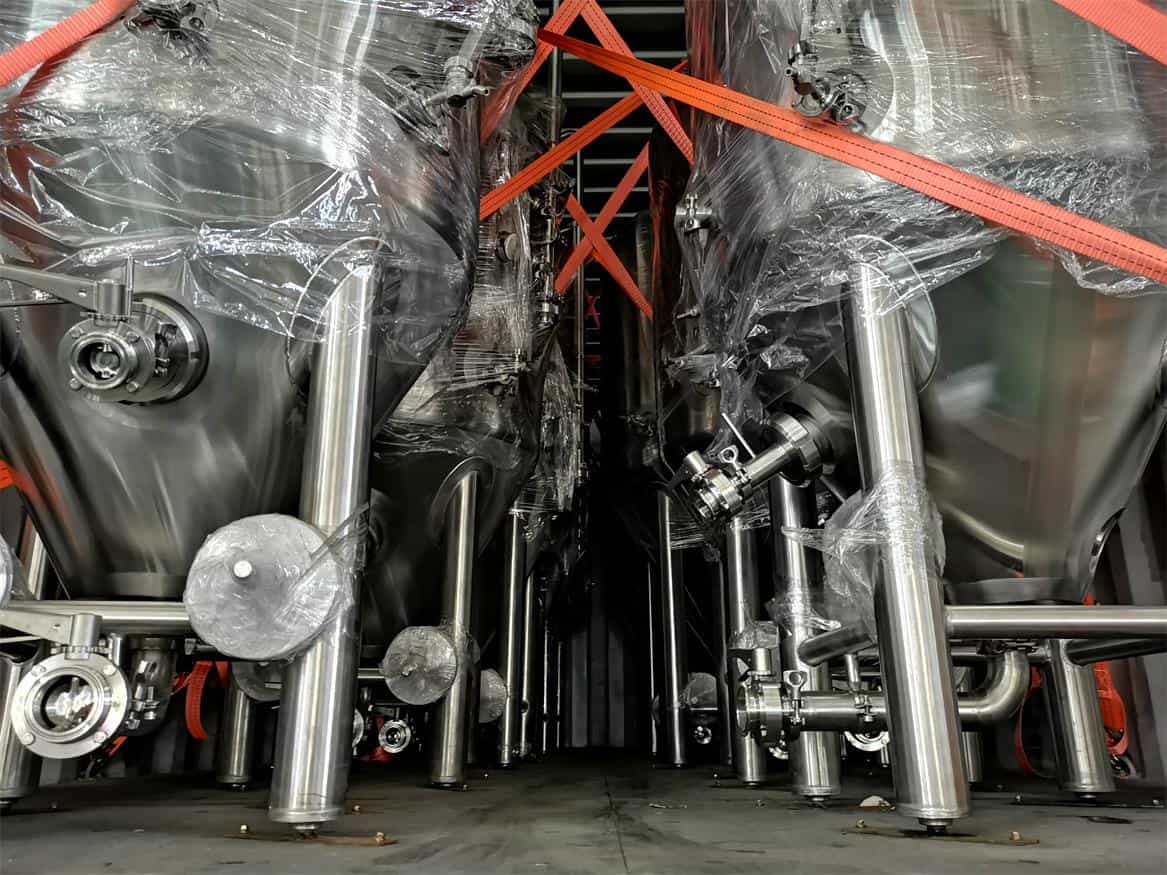
For the larger fermenter tanks or bright beer tanks, such as 10hL or bigger sizes, they could lie down in the 20GP containers with the U-steel supported, it’s very conveniently to move the tanks because of the bottom wheels assembled in the support frames.
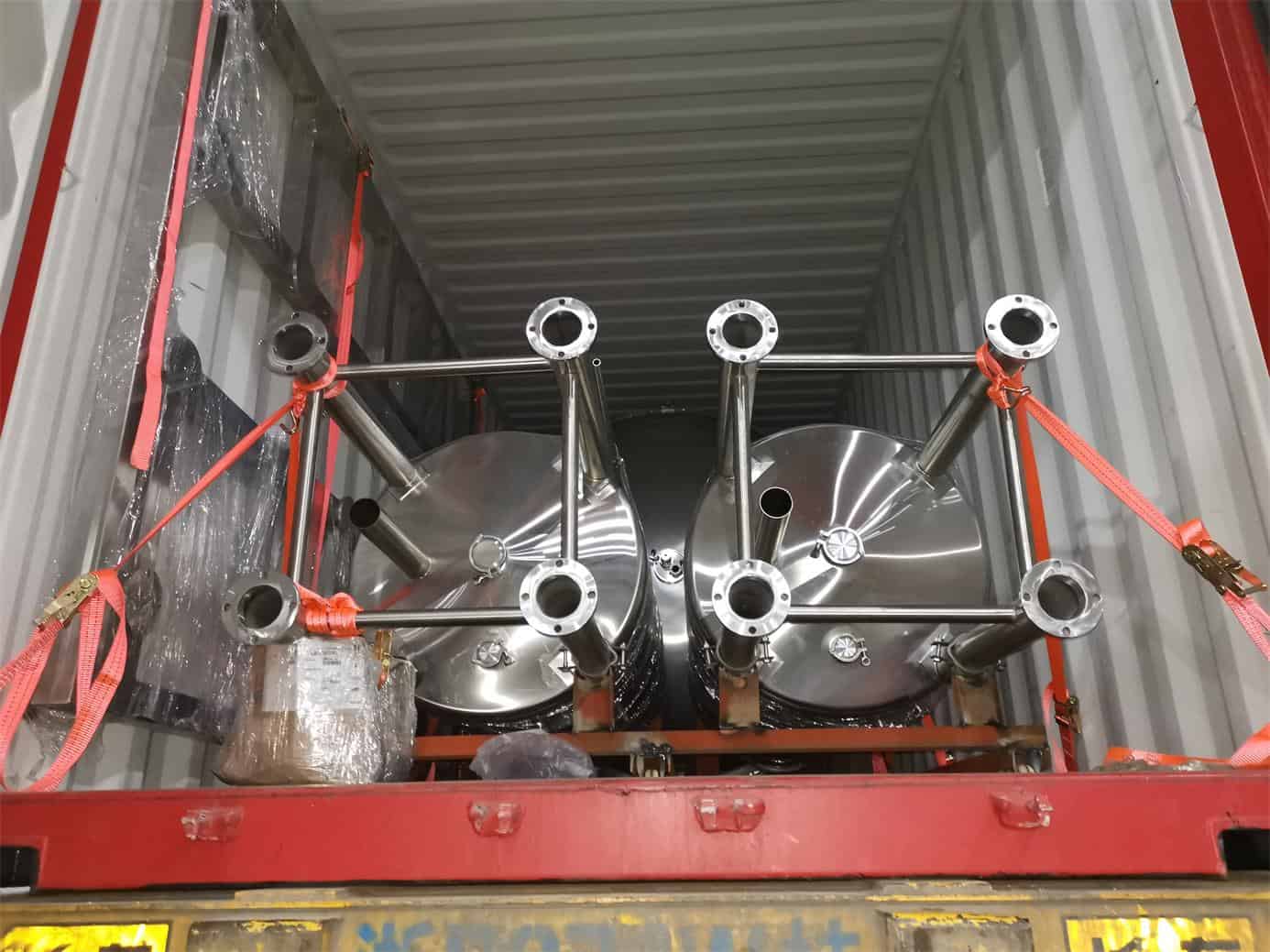
(3) 40GP ( 40 Feet General Purpose ) & 40HC ( 40 Feet High Cube )
They are the most general containers for the shipping of the brewing equipment, the internal dimensions of the 40GP is 11950 x 2340 x 2370 mm, 40HC container is 11950 x 2340 x 2680mm. The inner space is very big compared with the general 20 feet containers, so it can be not only used for the microbrewery upgrading or expanding, but also for the turn key brewery built projects. And also, the 40HC containers have a bigger internal space than the 40GP containers, but both have a very similar shipping cost, so the former (40HC) is more popular in the shipping of the microbrewery equipment.
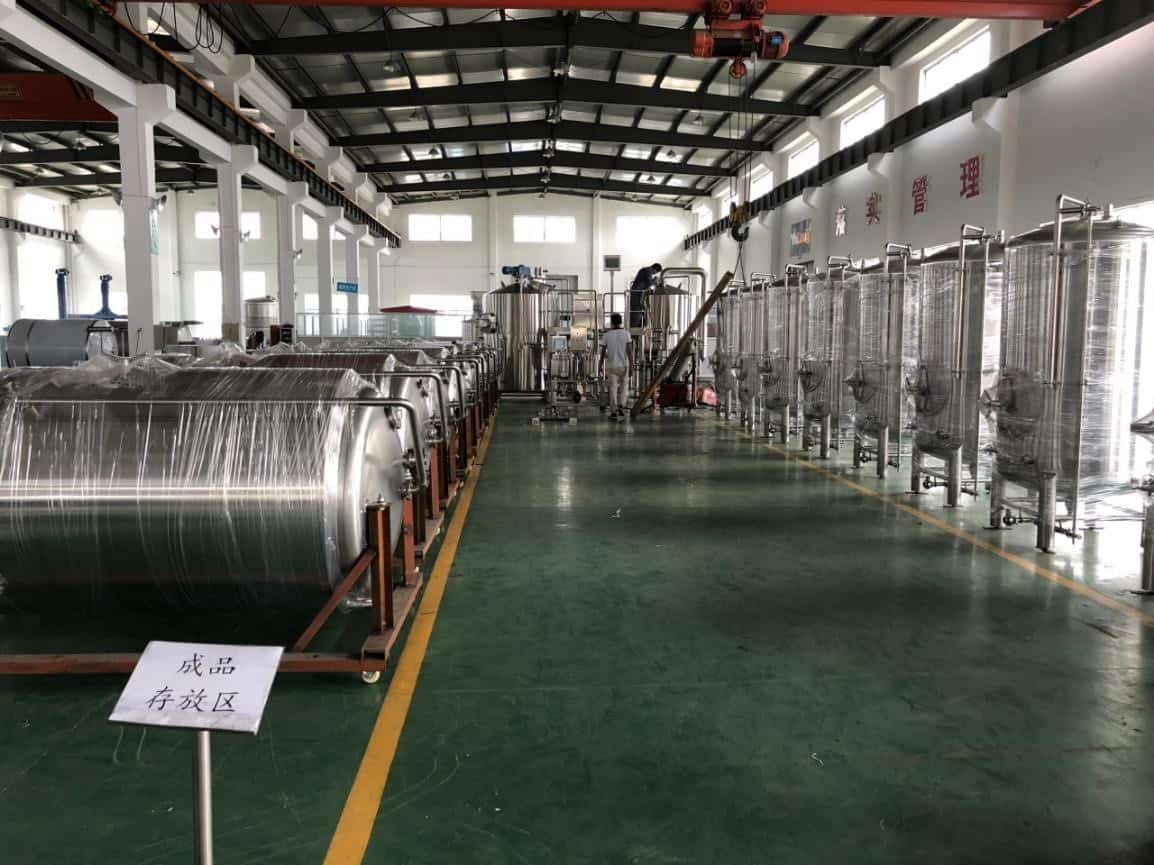
(4) 40OT ( 40 Feet Open Top ) & 40FR ( 40 Feet Flat Rack )
They are the special containers for the shipping of the brewing equipment and their prices are more higher than the general containers. So they are not common in the shipping of the brewery equipment, only used for the very larger tanks or turn key brewery built projects.
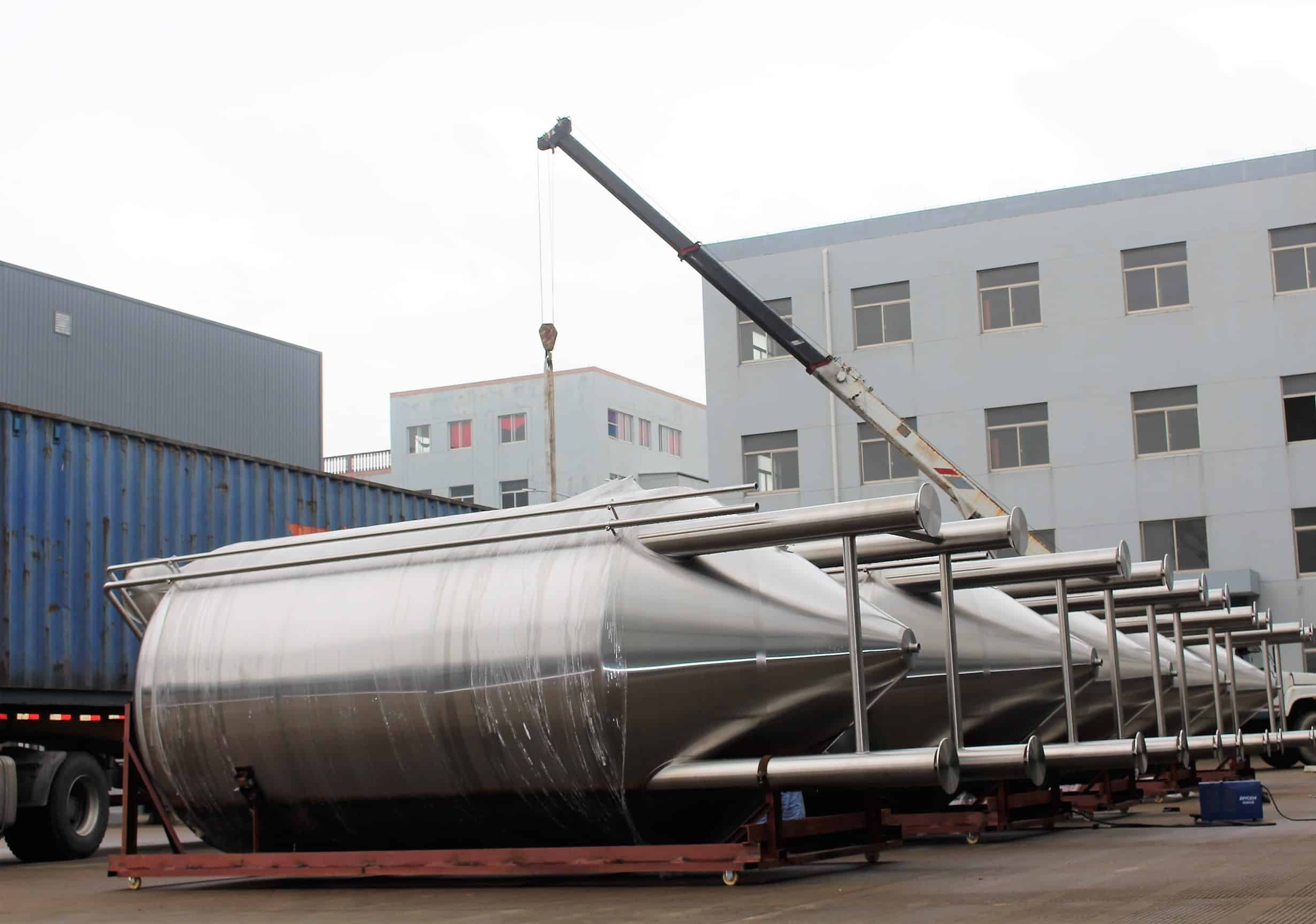
The internal dimensions of the 40OT is 12034 x 2352 x 2330 mm. Open-top containers can hold the brewing tanks whose height exceeds the maximum of containers, so theheight of open-top containers after loading is naturally higher than that of ordinary containers. Generally, some larger tanks can be loaded into the open-top containers. In fact, the open-top container is not larger than the general container, but higher than the general container. Its length and width are the same as the general containers, but the top can be opened.
The internal dimensions of the 40FR is 11784 x 2030 x 1943 mm. This container has no roof, no side plates around it, only front and rear plates, corner columns and front and rear roof beams. At the same time, the front and rear plates can be folded. After folding, they are integrated with the floor and look like a flat plate. In addition, the container floor is very thick, and the overall weight is heavier than ordinary containers, mainly used for loading very large tanks.
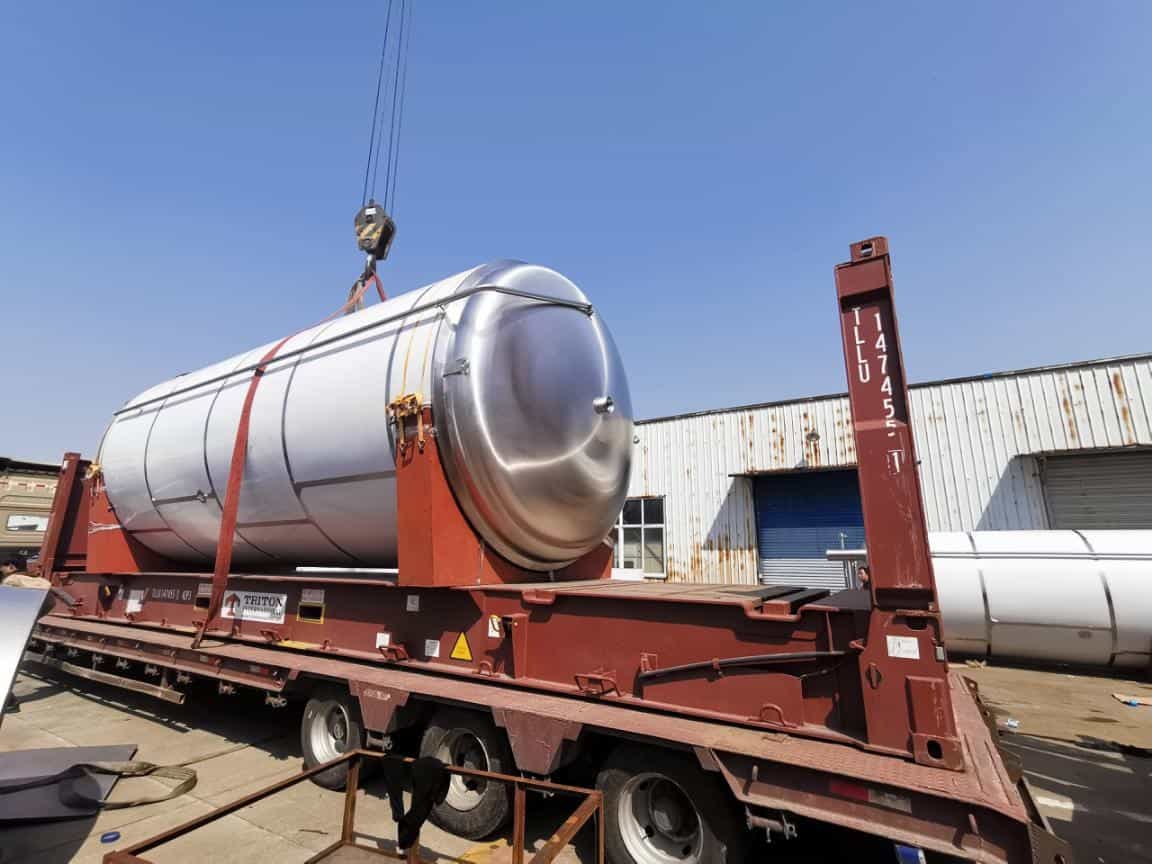
(5) 45HC ( 45 Feet High Cube )
It is the special containers for the shipping of the brewing equipment, the price is higher 30% than the general 40 feet containers. The internal dimensions of the 45HC is 13716 x 2438 x 2890 mm, it is longer than the 40 feet containers and could contain the taller tanks.
3. How would customers unload and reassemble the brewery equipment when the arrival
It’s always a exciting thing when the customers receive their brewery tanks, the first thing should do is to check if all the brewing tanks in good condition without any damages or scratches, and then unload the brewery equipment from the containers and move them to the brewing site.
For the small brewery upgrading and expending projects
General speaking, there are only few small fermenters or bright beer tanks needed for the small brewery upgrading or expending projects. What should we do is to loosen the ropes and feet bolts that fixing the tanks, and then transfer the tanks from the containers to the brewing site by the forklift truck, it’s a very easy work!
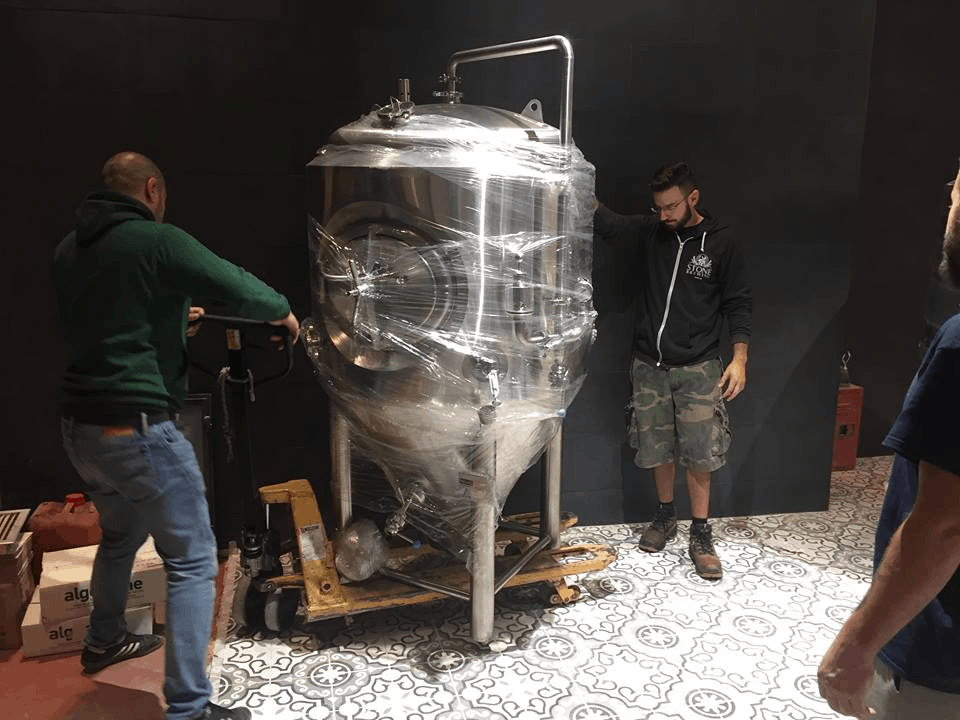
For the small turn-key brewery built projects
Regarding the small turn key projects, such as 10hL or smaller size brewing system, the brewhouse could be loaded in the general 40HC containers, so the customers could unload them from the containers directly without any adjustment or assembly before the using.
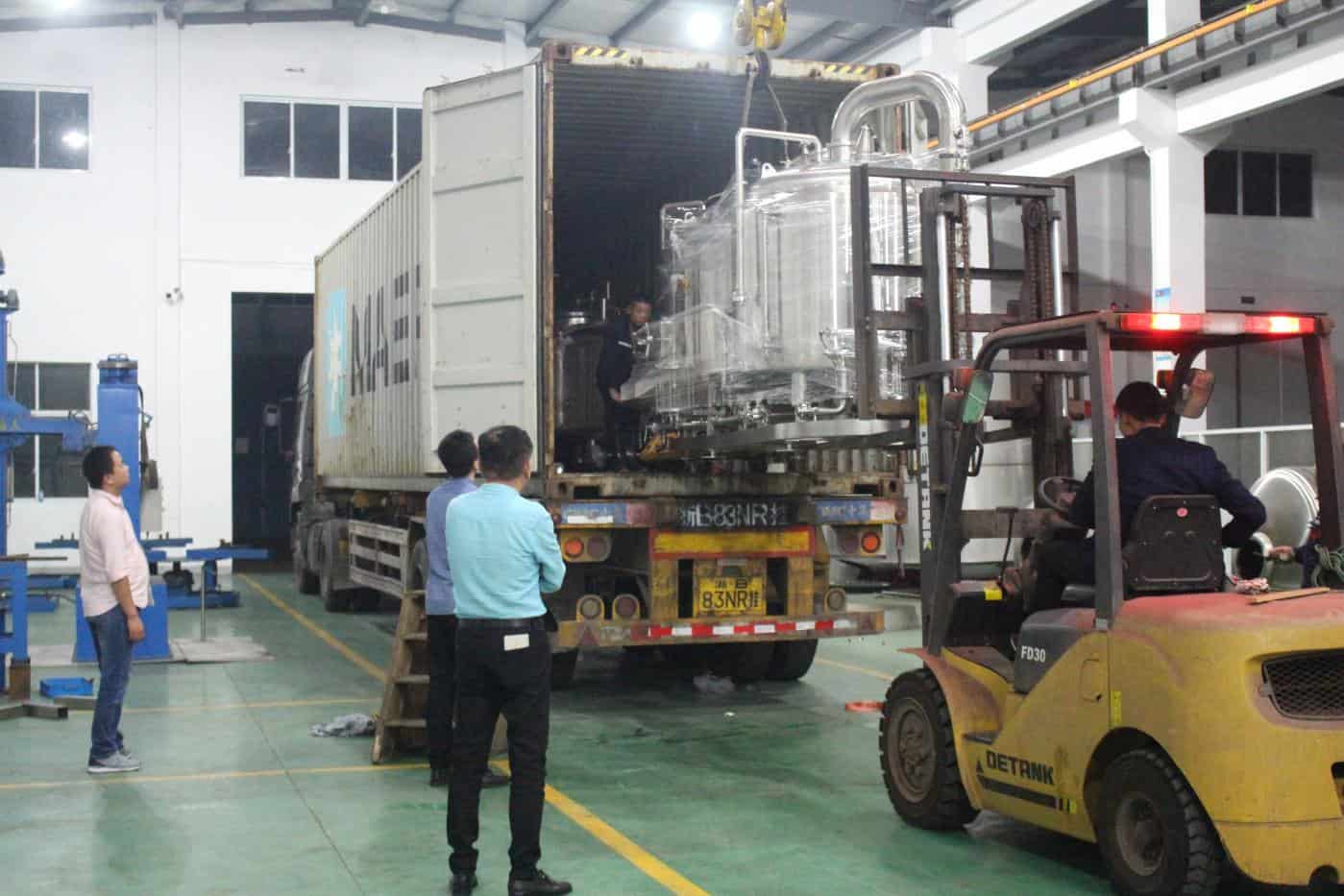
For the large turn-key brewery built projects
Regarding the large turn key projects, such as 15hL or bigger size brewing system, the brewhouse could not be loaded in the general 40HC containers directly, the brewhouse system has to be disassembled and packed separately before the shipping, so the customers have to reassemble the brewhouse system when they receive the tanks. This is really a difficult work.
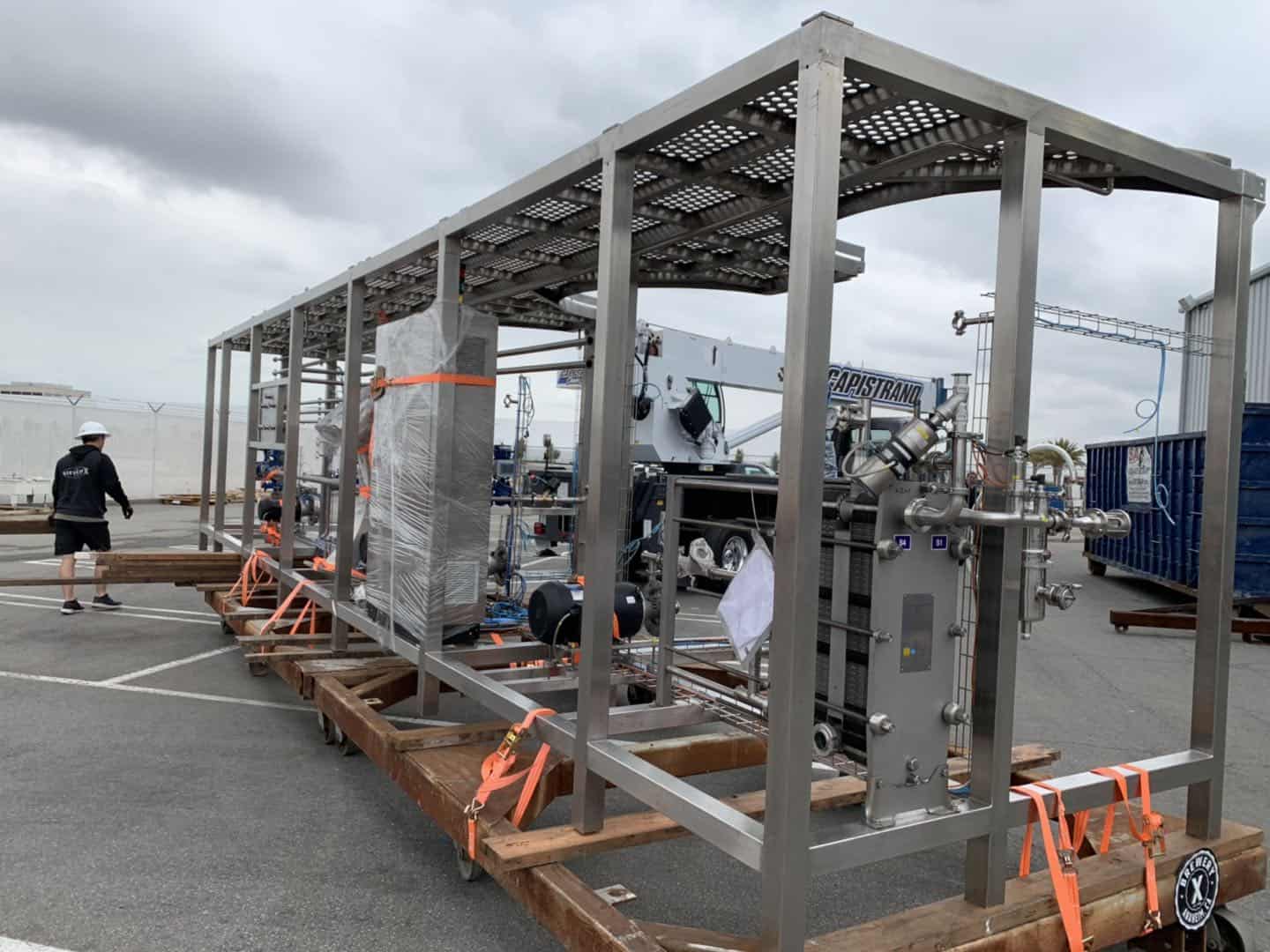
For the very large tanks contained by the special containers
For the large tanks shipped by the special containers, such as 40OT or 40FR containers, the crane machine will play an important role for the unloading tanks, it will handle the brewing equipment from the top of the containers by the ropes, and then deliver it by the the trucks.
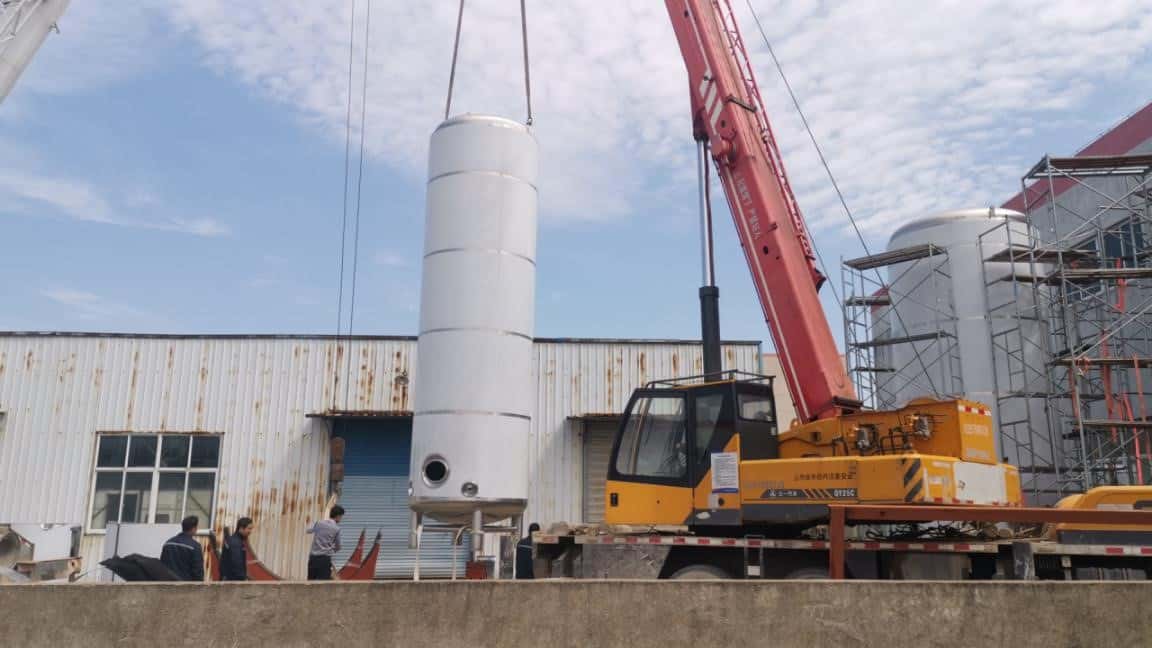
4. Summary
Admittedly, the manufacture process of the brewing equipment is very important for the quality, but the loading, shipping and unloading also play the important roles in the whole turn-key projects process. How to avoid the damages or scratches of the brewing equipment in the handing process is the theme of this article. What we said above are some common attentions in the loading & unloading process of the microbrewery equipment. Hope this could help you a lot if you are a beer lover and are looking to purchase the brewery equipment from the abroad!
Frequently Asked Questions (FAQ)
- Q1: What documents should I prepare before loading/unloading microbrewery equipment?
A1: Prepare the packing list with weights/center of gravity, lifting points diagrams, rigging plan, MSDS for any included chemicals, container seal numbers, and photos of pre-shipment condition for insurance. - Q2: How do I prevent tank deformation (vacuum collapse) during transit and unloading?
A2: Install and tag PVRV/vacuum breaks, keep manways secured, avoid hot rinsing sealed tanks, and never lift via top nozzles. Use spreader bars and rated slings on designated lugs. - Q3: What rigging gear is recommended at delivery?
A3: Certified slings, softeners/edge protectors, adjustable spreader bar, shackles, fork extensions, lifting eyes, and a 2–5 ton gantry or crane sized to heaviest lift + 25% safety margin. - Q4: How should I stage equipment after unloading for quick reassembly?
A4: Place vessels on dunnage by process order (hot side to cold side), sort by skid/crate ID, verify all valves/fittings vs BOM, and quarantine any damaged items pending insurer/supplier instructions. - Q5: What’s the best way to document damage for claims?
A5: Take timestamped photos/videos before breaking container seal, during unstuffing, and at first inspection. Note issues on the delivery receipt/BOL, keep all packaging, and notify carrier and supplier within 24–48 hours.
2025 Industry Trends: Loading/Unloading Microbrewery Equipment
- Digital twins and QR inventories: Pre-mapped lift points, center-of-gravity data, and QR-coded crates improve handling accuracy.
- Reusable crating: Steel bases with shock mounts and reusable plywood cut damage and waste vs. one-way crates.
- IoT shock/tilt sensors: Low-cost data loggers flag mishandling events >10g or >30° tilt during transit.
- Sustainability focus: ISPM-15 treated wood minimization and cradle-to-cradle crating programs.
- Safety-first SOPs: Carriers demand site-specific lift plans and certified riggers for 40OT/40FR oversize lifts.
2025 Handling Benchmarks and Logistics Signals
| Metric / Practice | 2023 Typical | 2025 Target/Best Practice | Why it Matters | Sources |
|---|---|---|---|---|
| Damage rate per container (%) | 3–6 | ≤1 | Reduces delays/costs | Freight insurance reports |
| Shock/tilt monitoring usage | Low | 60–80% of intl. shipments | Evidence for claims | Carriers/3PL surveys |
| Reusable crate/base adoption | <20% | 40–60% | Waste, cost, protection | OEM/vendor data |
| Unload time for 40HC (hrs) | 4–6 | 2–3 with pre-sort & lift plan | Labor and dock time | 3PL benchmarks |
| Documented lift plan on site | Ad hoc | 100% for lifts >1 ton | Safety/compliance | OSHA/BA guidance |
| ISPM-15 compliance checks | Occasional | 100% for all wood | Customs clearance | WTO/ISPM-15 |
Selected references: Brewers Association (BA) Safety and Logistics — https://www.brewersassociation.org; OSHA Materials Handling — https://www.osha.gov; International Plant Protection Convention (ISPM-15) — https://www.ippc.int; Major carriers/3PL advisories (Maersk, DHL)
Latest Research Cases
Case Study 1: QR-Coded Crating + Shock Sensors Cut Claims (2025)
Background: A regional brewer importing a 15 hL brewhouse saw frequent minor dents and missing fittings on arrival.
Solution: Implemented QR-coded packing (crate contents, lift points), added 3-axis shock/tilt sensors, and a standardized unload checklist with photo protocol.
Results: Claim frequency dropped from 5.2% to 0.9%; unload time decreased 38%; sensor data identified one high-impact event enabling a successful carrier claim.
Case Study 2: 40FR Oversize Tank Lift Plan Prevents Schedule Slip (2024)
Background: Two 80 hL FVs shipped on 40FR required street crane and night delivery permits.
Solution: Developed engineered lift plan (spreader bars, sling angles ≤60°, wind threshold 9 m/s), pre-staged rigging, and coordinated with municipal permitting.
Results: Zero incidents; both tanks set in 3 hours; avoided $12k standby fees; city inspection passed on first attempt.
Expert Opinions
- Mike Pallen, Logistics Manager, Portland Kettle Works
Viewpoint: “Most handling damage traces to unknown center-of-gravity and lifting from nozzles. Provide drawings and mandate spreader bars—no exceptions.” - Laura Ulrich, Brewer and Operations Consultant
Viewpoint: “Staging and BOM reconciliation right at the dock saves days later. Open every crate, tag every valve, and park items by process flow.” - Capt. Raj Gupta, Senior Marine Surveyor
Viewpoint: “For claims, contemporaneous evidence wins. Seal photos, EDI timestamps, and data logger downloads are powerful in settling disputes.”
Practical Tools/Resources
- BA Safety: Receiving and Rigging guidance — https://www.brewersassociation.org
- OSHA Materials Handling and Rigging — https://www.osha.gov
- ISPM-15 wood packaging standard — https://www.ippc.int
- Cargo data loggers (tilt/shock) vendor guides — search “impact indicator datasheet” from SpotSee, ShockWatch
- Lift plan calculators and sling angle charts — Crosby Group resources: https://www.thecrosbygroup.com
Last updated: 2025-09-01
Changelog: Added 5 FAQs on documentation, vacuum prevention, rigging gear, staging, and claims; introduced 2025 handling trends with benchmark table and sources; provided two case studies on QR/shock monitoring and 40FR lift planning; added expert viewpoints and practical resources
Next review date & triggers: 2026-02-15 or earlier if carrier/Customs rules change, BA/OSHA guidance updates, or claim rates exceed 2% on inbound shipments
Share this entry
Interested in learning more about Brewing Systems including additional details and pricing information? Please use the form below to contact us!
YOLONG BREWERY EQUIPMENT FAQS
- Commercial Brewery / Craft Brewery / Microbrewery / Nanobrewery
- What is The Difference Between Craft Beer and Industrial Beer?
- The Bespoke Differences In Custom Brewing Systems
- Everything You Need to Know About Kettle Souring
- How to Choose Brewing Equipment for Your business?
- How To Choose The-Best Partner To Build Your Commercial Microbrewing System?
- Two Detection Sensors That You Need To Use In Your Brewhouse System
- Remote Control Applications in Brewing Equipment/How does it work?
- How To Clean Your Brand New Brewery Tanks?
